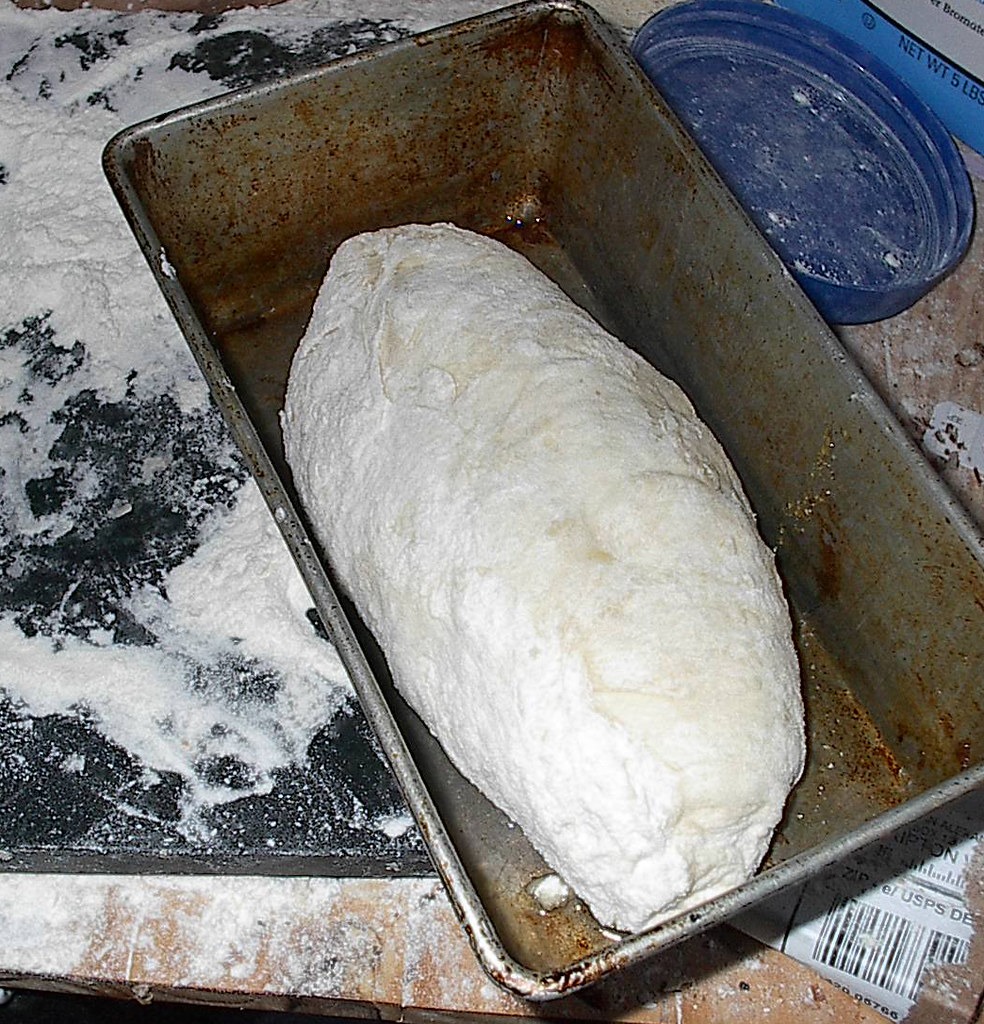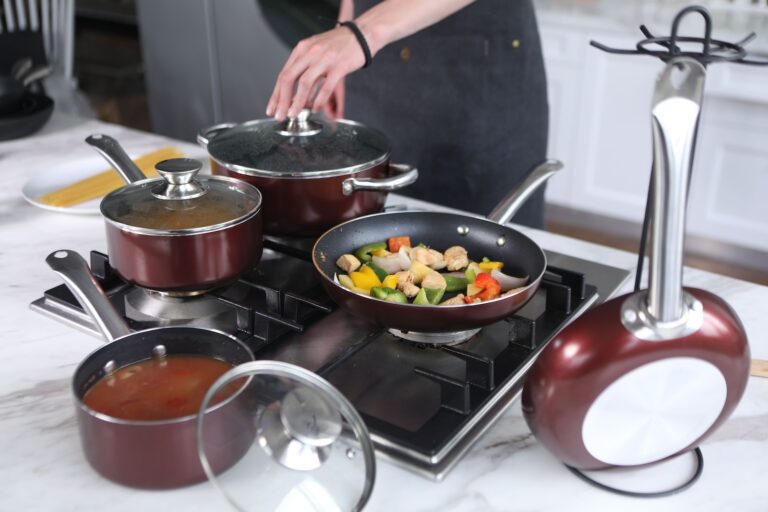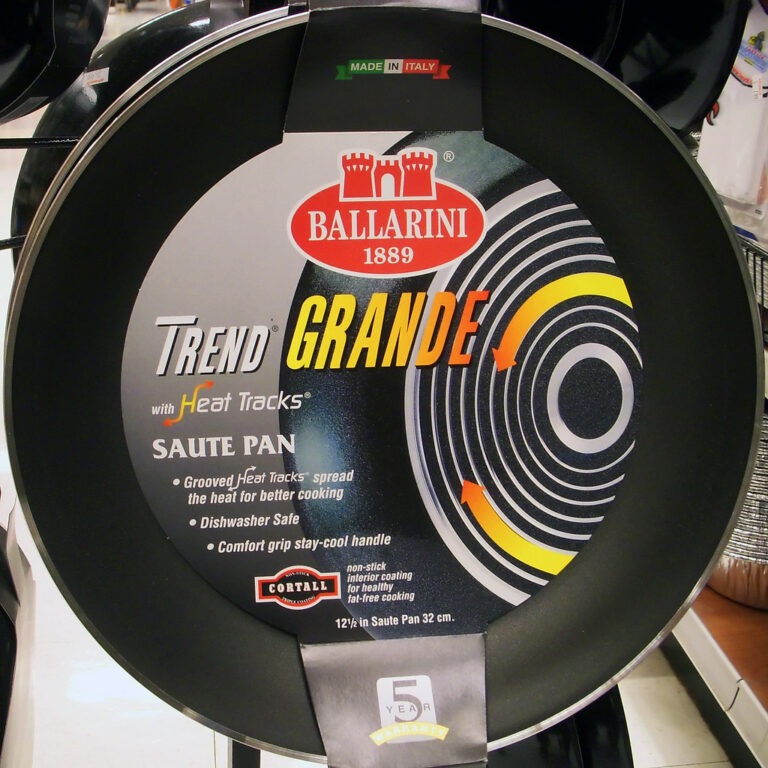I love baking, and one essential tool in my kitchen is a loaf pan. But what exactly is a loaf pan?
In this article, I’ll explore the different types of loaf pans, the materials they are made from, and the benefits of using one.
I’ll also share tips on choosing the right size and caring for your loaf pan.
Plus, I’ll include some mouthwatering recipes that you can whip up using this versatile kitchen staple.
Let’s dive in!
Key Takeaways
- Loaf pans come in various types and materials, including traditional metal, silicone, glass, ceramic, aluminum, and stainless steel.
- Using a loaf pan ensures even baking distribution, easy removal of finished bread, and uniform shape of baked goods.
- Proper care and maintenance of loaf pans, such as greasing, washing with warm soapy water, and avoiding harsh cleaning chemicals, are essential for their longevity and hygienic baking.
- Loaf pans are versatile kitchen tools that can be used for baking bread, cakes, meatloaf, quiches, and more, providing even baking and easy slicing.
Different Types of Loaf Pans
There are various types of loaf pans available in the market.
When it comes to baking bread, using a loaf pan can have several advantages.
One type of loaf pan is the traditional metal pan, which is sturdy and conducts heat evenly, resulting in a nicely browned crust.
Another option is a silicone loaf pan, which is flexible and non-stick, making it easy to remove the bread without any hassle.
Additionally, there are glass and ceramic loaf pans that offer excellent heat retention and create a beautiful presentation for your baked goods.
Using a loaf pan helps maintain the shape of your bread while baking, ensuring even cooking throughout.
It also makes slicing and serving much easier.
Materials Used in Loaf Pan Construction
When it comes to choosing a loaf pan, there are several considerations to keep in mind. One of the main factors is the material used in its construction. Two popular options are aluminum and stainless steel, each with their own pros and cons.
Additionally, it’s important to think about nonstick coatings and safety measures, as well as explore alternatives like glass and ceramic pans for those seeking different options.
Aluminum Vs. Stainless Steel
If you’re looking for a durable loaf pan, aluminum is the way to go over stainless steel. Here are four reasons why:
- Lightweight: Aluminum pans are much lighter than their cast iron counterparts, making them easier to handle and maneuver in the kitchen.
- Conducts heat evenly: Aluminum pans have excellent heat conductivity, ensuring your bread bakes evenly throughout without any hot spots.
- Non-reactive: Unlike cast iron, aluminum doesn’t react with acidic ingredients like tomatoes or citrus fruits, so you can use it for a wide variety of recipes without worrying about flavor changes.
- Affordable: Aluminum loaf pans are generally more affordable than cast iron ones, making them an excellent choice for those on a budget.
Nonstick Coatings and Safety
To ensure the safety of your cooking, be cautious when using nonstick coatings and avoid overheating them. There are alternatives to nonstick coatings that you can explore.
Health concerns have been raised regarding the use of traditional nonstick coatings, as they can release potentially harmful chemicals when heated at high temperatures. This has led many people to look for safer options in their cookware.
One alternative is ceramic coating, which is free from PFOA and PTFE, the chemicals commonly found in nonstick coatings.
Another option is cast iron cookware, which naturally becomes nonstick over time with proper seasoning.
Stainless steel pans with an added layer of oil or butter can also provide a good nonstick surface without the health concerns associated with traditional nonstick coatings.
It’s important to consider these alternatives to ensure both the safety of your food and your health.
Glass and Ceramic Options
One option for nonstick cookware that you may want to consider is glass or ceramic. Here are a few reasons why:
Glass loaf pans:
Pros:
- Even heat distribution for consistent baking.
- Transparent, allowing you to monitor the browning process.
- Non-reactive material, preserving the flavors of your baked goods.
Cons:
- May be more fragile and prone to breakage.
- Requires extra care when handling and cleaning.
Ceramic loaf pans:
Pros:
- Excellent heat retention for even baking.
- Durable and long-lasting.
- Can go from oven to table as a beautiful serving dish.
Cons:
- Heavier than other materials, making them harder to handle.
- May take longer to preheat compared to metal pans.
Considering these pros and cons, choose the option that suits your needs best!
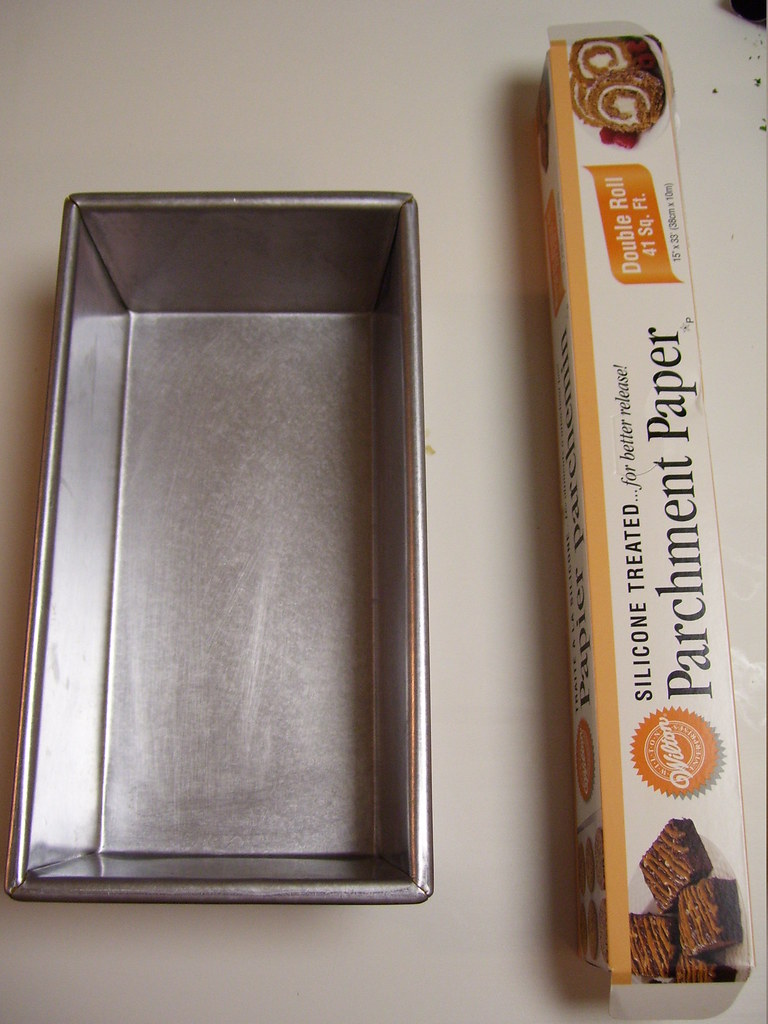
Benefits of Using a Loaf Pan
Using a loaf pan offers several key benefits.
First, it ensures even baking distribution, resulting in perfectly cooked loaves every time.
Additionally, the loaf pan’s design allows for easy removal of the finished product without any hassle or mess.
Even Baking Distribution
Make sure your loaf pan is properly greased to ensure even baking distribution. When it comes to achieving that perfect loaf of bread, even browning and crust development are key factors. Here are four reasons why using a loaf pan can help you achieve these results:
- Heat Conduction: The metal material of the loaf pan allows for efficient heat transfer, resulting in uniform baking throughout the bread.
- Shape Retention: The sturdy walls of the pan help maintain the shape of the dough as it rises and bakes, promoting even expansion and preventing uneven browning.
- Crust Formation: The enclosed space provided by the loaf pan creates steam, which aids in crust development by keeping the surface moist during baking.
- Golden Exterior: By trapping heat and moisture within the pan, a loaf pan promotes golden brown crust formation on all sides of the bread.
With a properly greased loaf pan, you can ensure that your baked goods will have an evenly cooked interior and a beautifully browned crust.
Easy Loaf Removal
To easily remove your freshly baked bread from the loaf pan, simply wait for it to cool before gently sliding it out. This simple step can prevent your bread from getting stuck and ensure a perfect presentation.
Loaf pan maintenance is also crucial in ensuring easy removal. Before using the pan, make sure to grease it properly with butter or oil to create a non-stick surface. After each use, wash the loaf pan thoroughly with warm soapy water and dry it completely before storing.
If you don’t have a loaf pan or prefer an alternative method, you can try baking your bread on a baking sheet or in a silicone loaf mold. These alternatives offer similar results and are easier to clean and maintain.
How to Choose the Right Size Loaf Pan
When choosing the right size loaf pan for your baking needs, you’ll want to consider the amount of batter you typically use and the desired shape and size of your finished loaf. Here are four key factors to keep in mind when choosing a loaf pan:
- Size: Loaf pans come in various sizes, ranging from mini loaf pans for individual servings to larger pans for family-sized loaves. Determine how much batter you usually work with and choose a pan that can accommodate it.
- Shape: Loaf pans can be rectangular or square-shaped. The shape you choose will depend on personal preference or the specific recipe you are following.
- Material: Loaf pans can be made of metal, glass, ceramic, or silicone. Each material has its own advantages and disadvantages in terms of heat distribution and durability.
- Coating: Consider whether you prefer a non-stick coating on your loaf pan for easy release of baked goods or if you would rather use parchment paper or grease the pan manually.
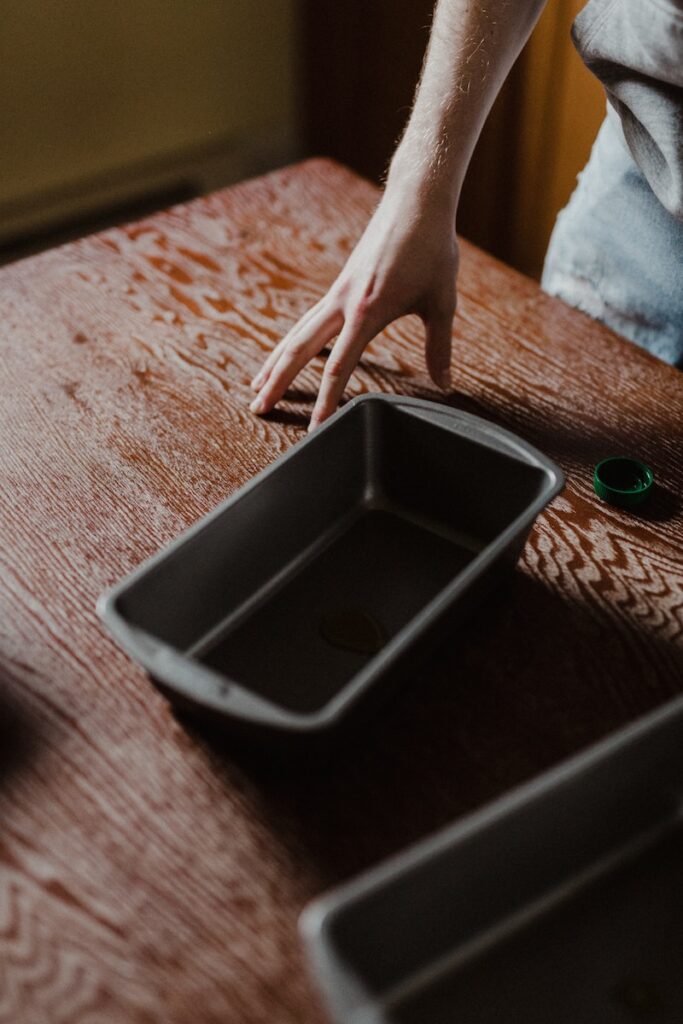
Tips for Properly Caring for Your Loaf Pan
One simple way to ensure your loaf pan stays in great shape is by using a gentle sponge or cloth to clean it after each use. By doing this, you can prevent any residue or grease from building up and potentially damaging the pan.
Additionally, it’s important to avoid using harsh cleaning chemicals or abrasive scrubbers, as they can scratch the surface of the pan. Instead, opt for mild dish soap and warm water to gently wash away any leftover crumbs or batter.
For stubborn stains, let the pan soak for a few minutes before scrubbing lightly with a non-abrasive sponge. Lastly, make sure to dry your loaf pan thoroughly after cleaning to prevent any rusting or corrosion.
Following these caring techniques and cleaning methods will help extend the lifespan of your loaf pan and keep it in pristine condition for many delicious bakes ahead.
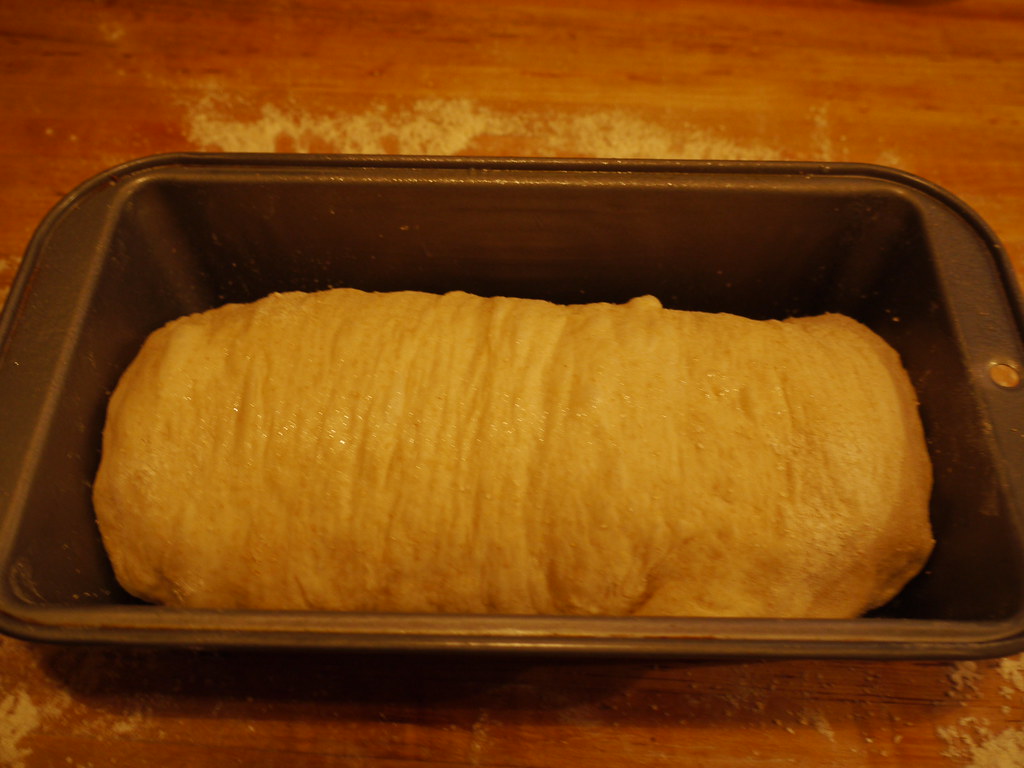
Delicious Recipes You Can Make With a Loaf Pan
Now that you know how to properly care for your loaf pan, let’s dive into some delicious recipes you can make with it. Loaf pans are versatile kitchen tools that can be used to create a wide range of tasty treats. Here are four mouthwatering recipe ideas to try:
- Banana Bread: Mash ripe bananas and mix them with flour, sugar, eggs, and butter. Bake in a loaf pan until golden brown and fragrant.
- Meatloaf: Combine ground beef, breadcrumbs, onions, garlic, and spices in a loaf pan. Shape into a loaf shape and bake until cooked through.
- Lemon Pound Cake: Cream together butter and sugar before adding eggs, lemon zest, flour, and baking powder. Pour the batter into a greased loaf pan and bake until golden.
- Veggie Quiche: Whisk together eggs, milk, cheese, vegetables of your choice (such as spinach or mushrooms), salt, pepper, and pour the mixture into a greased loaf pan before baking.
If you don’t have a loaf pan on hand or want to try something different, there are also alternative options available such as using muffin tins or baking dishes of similar size and shape.
Conclusion
In conclusion, using a loaf pan is a convenient and versatile way to bake delicious treats. Whether you’re making bread, meatloaf, or even desserts, a loaf pan provides the perfect shape and even heat distribution for optimal results.
With different types and sizes available, it’s important to choose the right one for your needs. By properly caring for your loaf pan, it will last for years to come.
So grab your favorite recipes and start baking with a loaf pan today!
